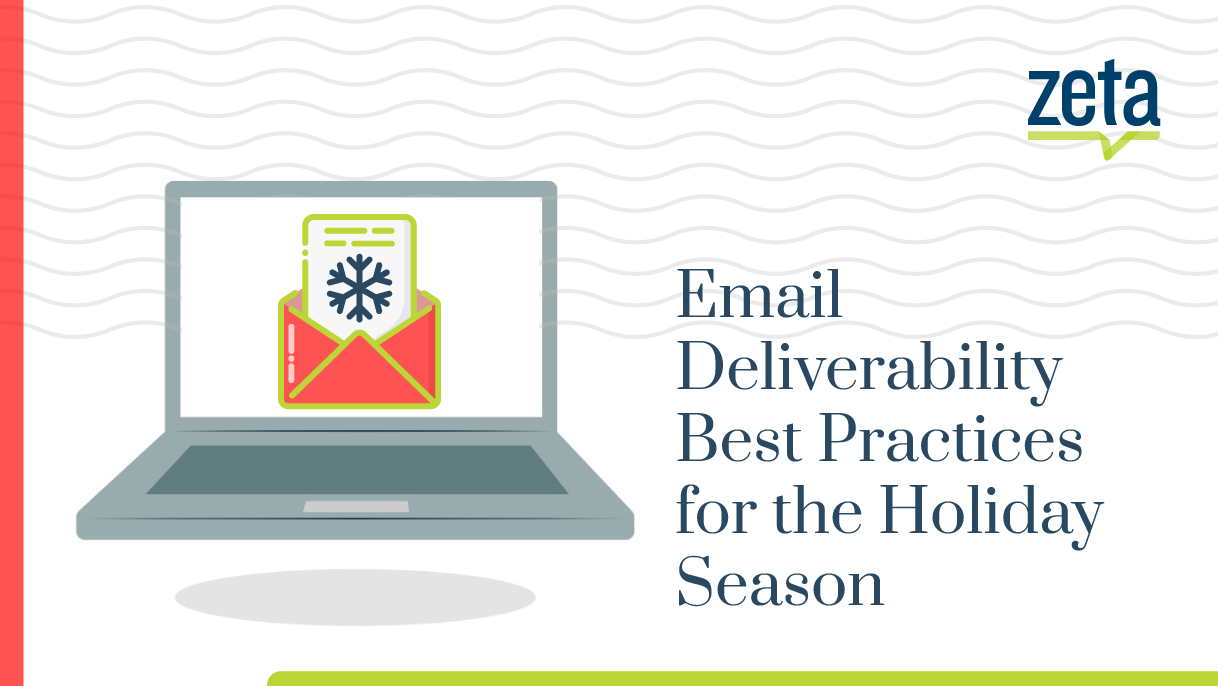
Whitepapers | August 26, 2020 | 6 min read
Email Deliverability Best Practices for the 2020 Holiday Season
With consumers engaging in more discretionary spending than at any other point in the year, the holidays might as well be called the “make it or break it” season for marketers. As such, marketers will often expand their targeting criteria, and blast out more offer-laden emails than at any other point during the year. Their hope?—to not only attract one-off, seasonal shoppers, but also rekindle the interest of former customers, and maximize the acquisition of net-new customers. This reality is why following email deliverability best practices during the holidays is so important. Of course, changing mailing behavior during the holiday season is nothing new. What is new is how important it is to plan, pace, and execute those altered mailing behaviors in an intelligent way. (Think of planning your holiday mailing campaign like training for a marathon—it’s all about careful preparation. If you just step outside and try to run 26.2 miles without preparing, you’re going to finish with a terrible time at best, or hurt yourself at worst. The same is true for email deliverability during the holidays. When marketers don’t take the time to properly plan their mailing strategy for optimal performance during this peak season, they put themselves at risk. Proper preparation is the key to easing ISPs into new send patterns for the holiday season. By waiting too long to prepare (or not preparing properly altogether), you can do real damage to your send program.) There are several strategic steps every email marketer should take when it comes to building a holiday sending program to ensure deliverability issues are less likely to occur. Here are Zeta’s email deliverability best practices for the 2020 holiday season..
On any given day, sudden changes in mailing behavior can trigger filter systems to update how they view and treat incoming mail. These updates can negatively impact a marketer’s program for a short (rate limiting, bulking, etc.) or long (blocking or blacklisting) period of time. So, what makes the holidays—a peak season when there’s a large influx of mail from every brand—any different? Nothing. Therefore, marketers must use strategic planning to introduce changes thoughtfully and slowly (while other maintaining best practices, of course). That means finding bold new ways to spread seasonal messages and connect with customers.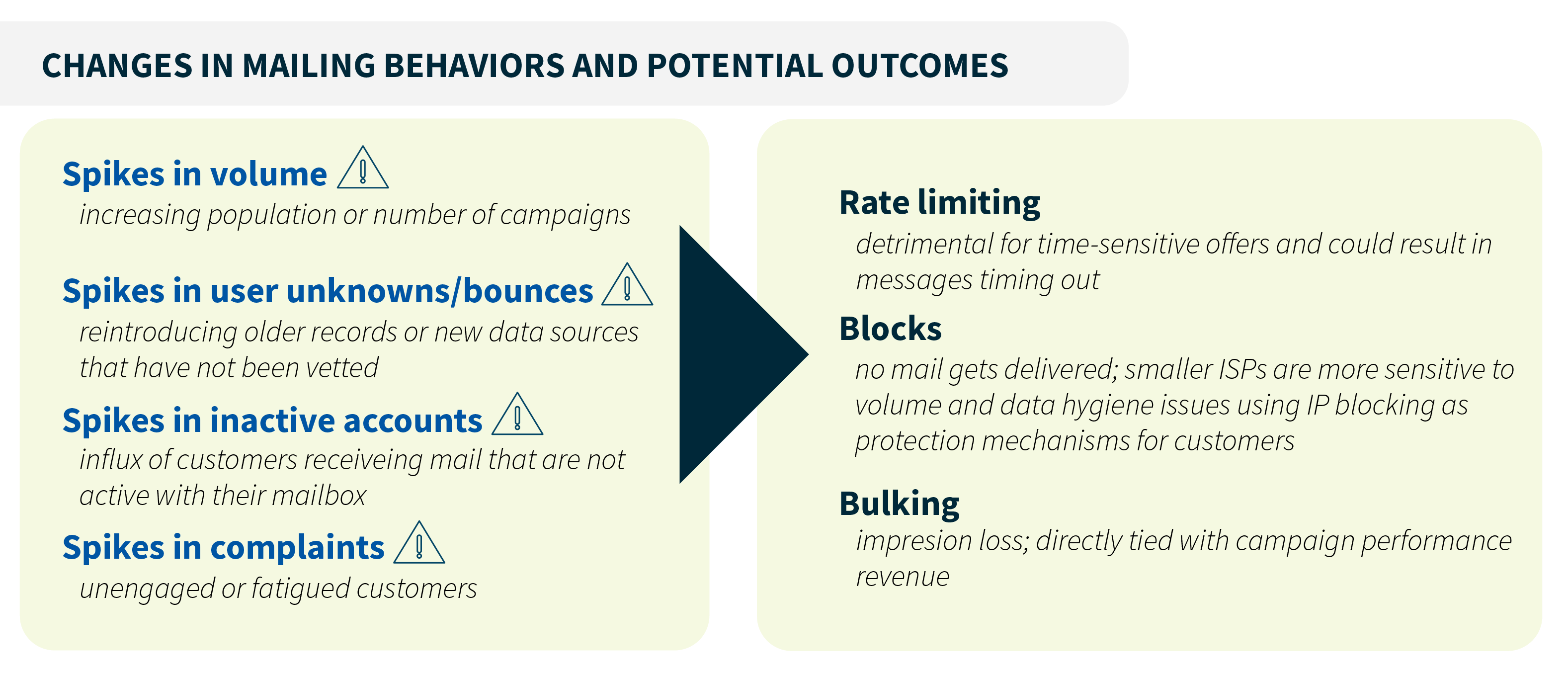
Whenever volume is added (be it a new data stream, an extension of targeting, or some combination of the two) a review of list health should occur. During this review, questions should be asked to minimize any risk from the additional volume, such as:
Understanding the risk of mailing an unknown or unengaged population is vital for holiday season preparation. Although user unknowns (bad addresses) can be cleaned out through regular list maintenance, removing spam traps is much harder. Once a spam trap is created, it will not engage in mailings. So, to help flush them from the mailable population, incorporate past engagement into targeting. Because it’s unlikely engagement criteria will be employed with new-to-file recipients, addressing the source of traps is the first line of defense. Confirmed opt-out/in campaigns, CAPTCHA, and email validation at the point of collection are three ways to prevent traps from entering the database (the last thing any sender wants is to be blacklisted). Spamhaus, for example, is a blacklist no sender wants to get acquainted with. This blacklist is utilized by the top 4 ISPs, and a listing here can completely handicap a sender’s mail stream. In severe cases, it can even hinder multiple IP addresses (entire IP ranges in the most extreme circumstances). Landing on a major blacklists like Spamhaus can take weeks (if not months) to correct.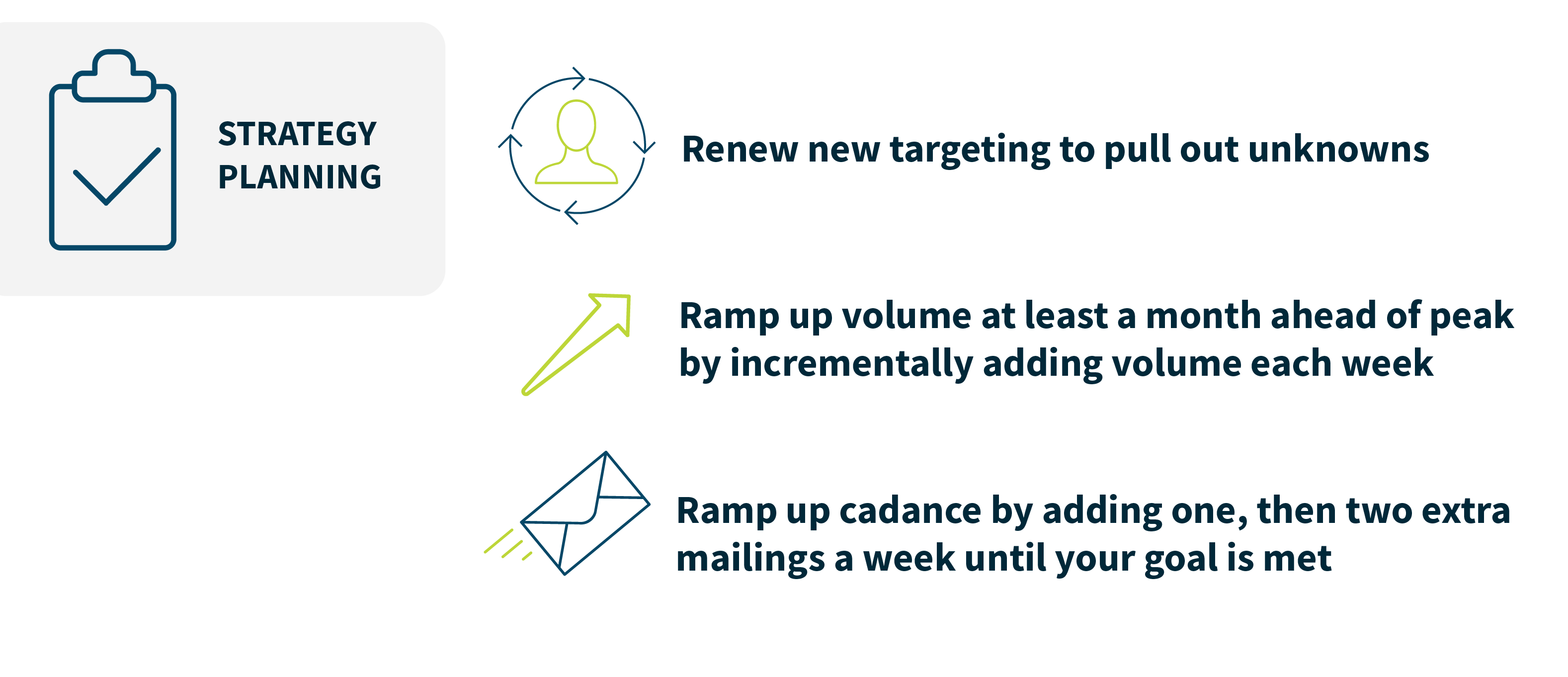 Once the mailing data is vetted, it should be introduced slowly. A sudden influx of mail mimics the behaviors of spammers and will often negatively impact a sender’s reputation, resulting in bulking. By incrementally increasing volume, the sender creates a new, paced pattern of behavior that’s monitored. Similar to an increase in volume, a ramp-up plan should be used when increasing the cadence of messages that will ultimately be pushed during holiday peak (keep in mind that when cadence is increased, volume is likely to increase as well). In addition to volume considerations and data integrity, it’s important to understand how list makeup will change (as well as how it will change the resulting engagement). List makeup, refers to how many users on the recipient list are active versus inactive. Added volumes can easily dilute the population of customers engaging and, therefore, overall engagement rates. If these rates decline, it will make the sender look less desirable—something no marketer wants. Fortunately, some of the larger ISPs are adept at personalizing inboxing, so those recipients with a history of engagement will continue to receive emails. That being said, if the metrics swing too dramatically into the negative as a result of fatigue, complaints, and other factors, it could be enough to override any positive engagement history.
Once the mailing data is vetted, it should be introduced slowly. A sudden influx of mail mimics the behaviors of spammers and will often negatively impact a sender’s reputation, resulting in bulking. By incrementally increasing volume, the sender creates a new, paced pattern of behavior that’s monitored. Similar to an increase in volume, a ramp-up plan should be used when increasing the cadence of messages that will ultimately be pushed during holiday peak (keep in mind that when cadence is increased, volume is likely to increase as well). In addition to volume considerations and data integrity, it’s important to understand how list makeup will change (as well as how it will change the resulting engagement). List makeup, refers to how many users on the recipient list are active versus inactive. Added volumes can easily dilute the population of customers engaging and, therefore, overall engagement rates. If these rates decline, it will make the sender look less desirable—something no marketer wants. Fortunately, some of the larger ISPs are adept at personalizing inboxing, so those recipients with a history of engagement will continue to receive emails. That being said, if the metrics swing too dramatically into the negative as a result of fatigue, complaints, and other factors, it could be enough to override any positive engagement history.
Senders must avoid being another email in the inbox—strive to STAND OUT. New content and new branding should be tested well before the holiday peak so there’s ample time to optimize for any underwhelming messages. Unique branding and content makes it easier for recipients to identify emails in the midst of the holiday season, which subsequently makes it easier for them to be searched for, engaged with, or opted down from.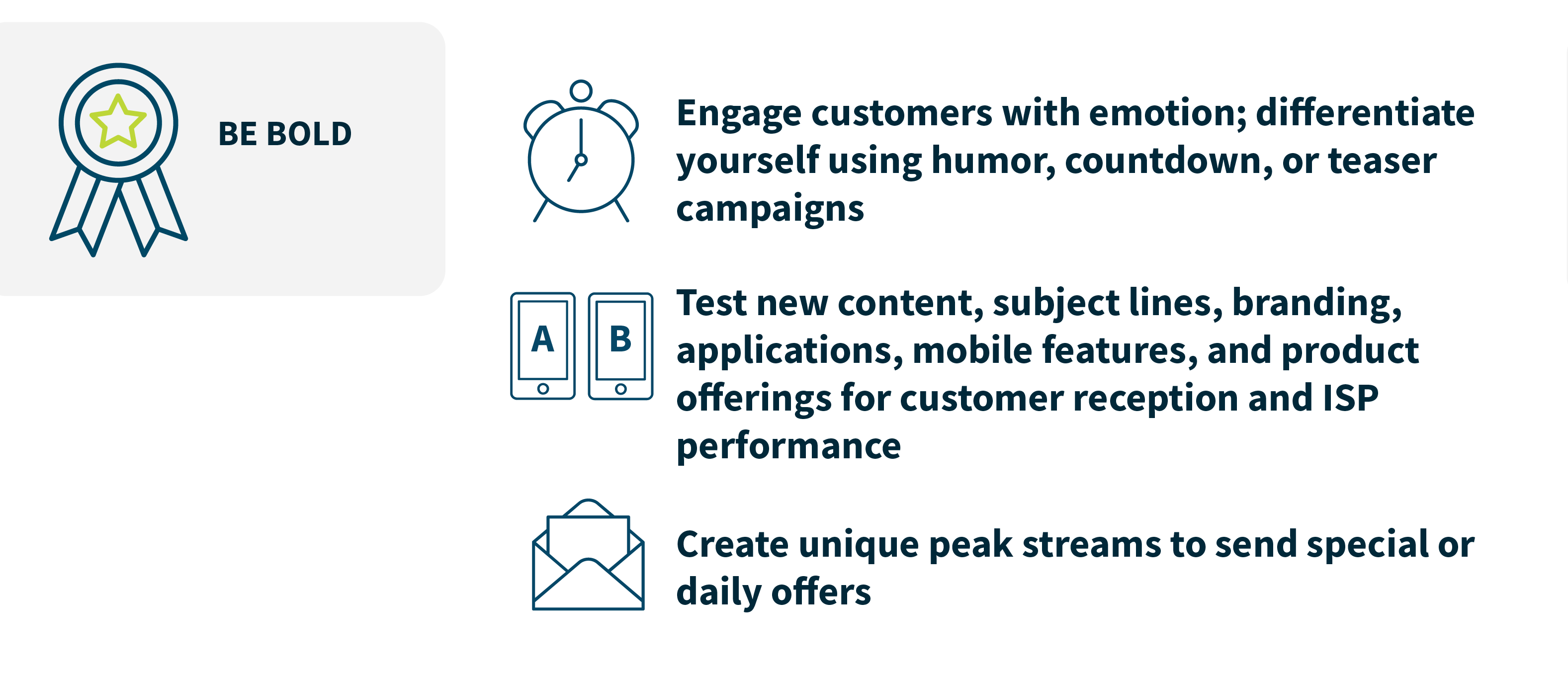
Much like Ancient Greeks said “know thyself”, ISPs say “know thy recipient.” Even the best laid email marketing plans can be undone if the mail being sent is unwanted. ISPs like Gmail, Microsoft, and Yahoo are very attuned to what their customers want, so if they see an increase in complaints or diminishing positive engagement, the ISPs will punish the sender accordingly. Therefore, it’s absolutely critical for senders to use their pre-holiday time to get to know their recipients by asking questions like:
These and other questions are key to ensuring the delivery of relevant mail. Meeting recipients’ needs should be the foundation upon which all messaging, targeting, and cadence are built. To that end, senders should strive to create open lines of communication with their recipients. That means informing them of any upcoming increase in messaging volume or cadence. It also means allowing recipients to manage their own sending preferences (e.g. opting down or out of emails via a preference center). Steps like these allow senders to accommodate the recipients who aren’t interested in receiving an onslaught of holiday marketing messages. While it seems counterproductive, giving recipients an easy, upfront way to “press pause” is the most effective way to avoid the symptoms of fatigue (e.g. rising complaints, dropping engagement, etc.) that can lead to deliverability issues.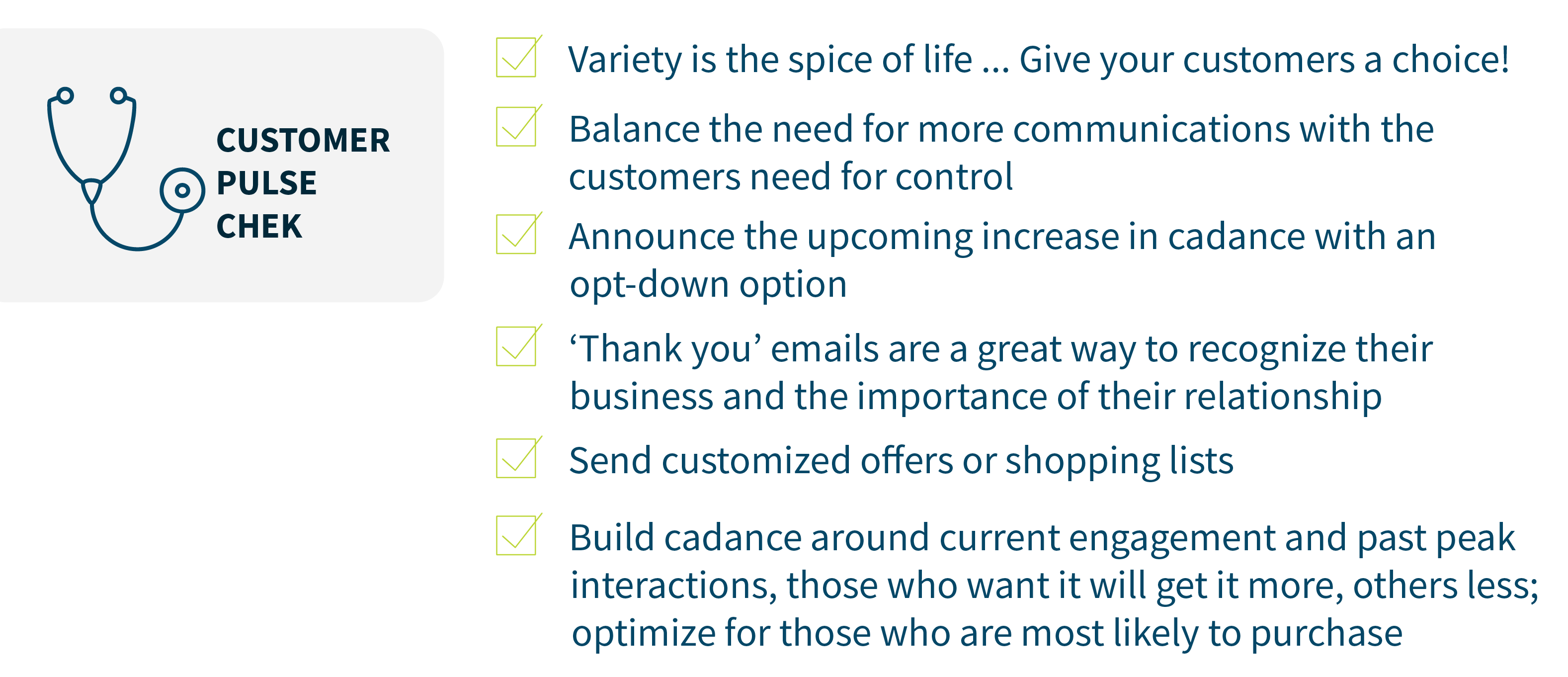
Different strategies (cadence, message content, targeting, etc.) should be developed based on your recipients’ propensity to engage with content and, ultimately, purchase products or services. Remember that recipient interaction is a focal point for ISPs. If ISPs see their customers becoming unengaged or non-active with certain emails, the ISP will assume (fairly or unfairly) that the sender isn’t attuned to their recipient’s wants and needs. To learn more about email deliverability best practices for holiday season 2020, talk to Zeta—we’ll ensure this holiday season is your most productive season yet!
Do NOT make sudden, dramatic changes
On any given day, sudden changes in mailing behavior can trigger filter systems to update how they view and treat incoming mail. These updates can negatively impact a marketer’s program for a short (rate limiting, bulking, etc.) or long (blocking or blacklisting) period of time. So, what makes the holidays—a peak season when there’s a large influx of mail from every brand—any different? Nothing. Therefore, marketers must use strategic planning to introduce changes thoughtfully and slowly (while other maintaining best practices, of course). That means finding bold new ways to spread seasonal messages and connect with customers.

Get strategic about planning
Whenever volume is added (be it a new data stream, an extension of targeting, or some combination of the two) a review of list health should occur. During this review, questions should be asked to minimize any risk from the additional volume, such as:
- Where is the data coming from?
- Have the recipients opted in, and are they expecting the upcoming mail streams?
- When was the last communication sent? Are these recipients engaged with the program? If so, when was their last interaction?
- Are the recipients being engaged through other marketing streams outside of email? Is there data available about their interactions?
- Has the list been run through an email validation service to reduce the likelihood of spikes in unknown user attempts?
Understanding the risk of mailing an unknown or unengaged population is vital for holiday season preparation. Although user unknowns (bad addresses) can be cleaned out through regular list maintenance, removing spam traps is much harder. Once a spam trap is created, it will not engage in mailings. So, to help flush them from the mailable population, incorporate past engagement into targeting. Because it’s unlikely engagement criteria will be employed with new-to-file recipients, addressing the source of traps is the first line of defense. Confirmed opt-out/in campaigns, CAPTCHA, and email validation at the point of collection are three ways to prevent traps from entering the database (the last thing any sender wants is to be blacklisted). Spamhaus, for example, is a blacklist no sender wants to get acquainted with. This blacklist is utilized by the top 4 ISPs, and a listing here can completely handicap a sender’s mail stream. In severe cases, it can even hinder multiple IP addresses (entire IP ranges in the most extreme circumstances). Landing on a major blacklists like Spamhaus can take weeks (if not months) to correct.
 Once the mailing data is vetted, it should be introduced slowly. A sudden influx of mail mimics the behaviors of spammers and will often negatively impact a sender’s reputation, resulting in bulking. By incrementally increasing volume, the sender creates a new, paced pattern of behavior that’s monitored. Similar to an increase in volume, a ramp-up plan should be used when increasing the cadence of messages that will ultimately be pushed during holiday peak (keep in mind that when cadence is increased, volume is likely to increase as well). In addition to volume considerations and data integrity, it’s important to understand how list makeup will change (as well as how it will change the resulting engagement). List makeup, refers to how many users on the recipient list are active versus inactive. Added volumes can easily dilute the population of customers engaging and, therefore, overall engagement rates. If these rates decline, it will make the sender look less desirable—something no marketer wants. Fortunately, some of the larger ISPs are adept at personalizing inboxing, so those recipients with a history of engagement will continue to receive emails. That being said, if the metrics swing too dramatically into the negative as a result of fatigue, complaints, and other factors, it could be enough to override any positive engagement history.
Once the mailing data is vetted, it should be introduced slowly. A sudden influx of mail mimics the behaviors of spammers and will often negatively impact a sender’s reputation, resulting in bulking. By incrementally increasing volume, the sender creates a new, paced pattern of behavior that’s monitored. Similar to an increase in volume, a ramp-up plan should be used when increasing the cadence of messages that will ultimately be pushed during holiday peak (keep in mind that when cadence is increased, volume is likely to increase as well). In addition to volume considerations and data integrity, it’s important to understand how list makeup will change (as well as how it will change the resulting engagement). List makeup, refers to how many users on the recipient list are active versus inactive. Added volumes can easily dilute the population of customers engaging and, therefore, overall engagement rates. If these rates decline, it will make the sender look less desirable—something no marketer wants. Fortunately, some of the larger ISPs are adept at personalizing inboxing, so those recipients with a history of engagement will continue to receive emails. That being said, if the metrics swing too dramatically into the negative as a result of fatigue, complaints, and other factors, it could be enough to override any positive engagement history.
Be bold
Senders must avoid being another email in the inbox—strive to STAND OUT. New content and new branding should be tested well before the holiday peak so there’s ample time to optimize for any underwhelming messages. Unique branding and content makes it easier for recipients to identify emails in the midst of the holiday season, which subsequently makes it easier for them to be searched for, engaged with, or opted down from.

Know the pulse of the customer
Much like Ancient Greeks said “know thyself”, ISPs say “know thy recipient.” Even the best laid email marketing plans can be undone if the mail being sent is unwanted. ISPs like Gmail, Microsoft, and Yahoo are very attuned to what their customers want, so if they see an increase in complaints or diminishing positive engagement, the ISPs will punish the sender accordingly. Therefore, it’s absolutely critical for senders to use their pre-holiday time to get to know their recipients by asking questions like:
- Who are our recipients?
- What are our recipients’ communication and product preferences?
- What devices are they using to read our messages? To buy our products or services?
- What does their purchase history tell us about their previous behavior? Their future behavior?
- How is our campaign-level performance being monitored?
- How did our recipients engage with email last holiday season?
These and other questions are key to ensuring the delivery of relevant mail. Meeting recipients’ needs should be the foundation upon which all messaging, targeting, and cadence are built. To that end, senders should strive to create open lines of communication with their recipients. That means informing them of any upcoming increase in messaging volume or cadence. It also means allowing recipients to manage their own sending preferences (e.g. opting down or out of emails via a preference center). Steps like these allow senders to accommodate the recipients who aren’t interested in receiving an onslaught of holiday marketing messages. While it seems counterproductive, giving recipients an easy, upfront way to “press pause” is the most effective way to avoid the symptoms of fatigue (e.g. rising complaints, dropping engagement, etc.) that can lead to deliverability issues.

Putting it all together using email deliverability best practices
Different strategies (cadence, message content, targeting, etc.) should be developed based on your recipients’ propensity to engage with content and, ultimately, purchase products or services. Remember that recipient interaction is a focal point for ISPs. If ISPs see their customers becoming unengaged or non-active with certain emails, the ISP will assume (fairly or unfairly) that the sender isn’t attuned to their recipient’s wants and needs. To learn more about email deliverability best practices for holiday season 2020, talk to Zeta—we’ll ensure this holiday season is your most productive season yet!


